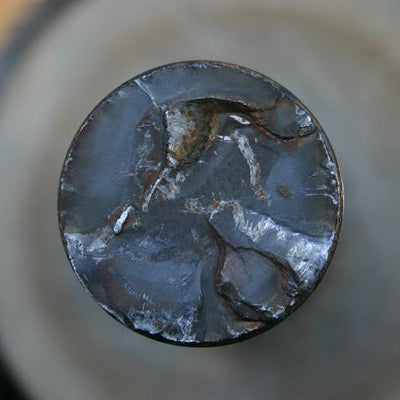Understanding Water Pump Failures & a Helpful Troubleshooting Chart

BROKEN WATER PUMP SHAFTS ARE COMMONLY CAUSED BY:
- Bent, cracked, or broken fan.
- Fan not squarely mounted on the shaft.
- Cracked or bent pulleys due to improper handling or installation.
- Over-tightened belts cause overloads on the bearing, greatly reducing its operating life.
- They also impose a powerful bending force on the shaft, causing it to deflect substantially from true center rotation. The result is large unbalance and early shaft fracture.
SEEPAGE FROM THE WEEP HOLE:
Pronounced seepage from the weep hole is a sure sign of seal failure. The life of the seal can be greatly extended by performing regular maintenance on your cooling system.
Periodic inspection of hoses and coolant recovery tank will assure coolant levels are correct and that no atmospheric contaminants that can cause oxidation and sludge build-up are present. Sludge build-up in the cooling system is a primary cause of seal failure as well as reduced cooling system efficiency.
Water Pump Troubleshooting Chart
| Symptom | Probable Cause | |||
|---|---|---|---|---|
| Overheating | Leaks at water pump bolts | Leaks at gasket | Scraping noise when pump shaft is turned | |
| X | Low coolant level | |||
| X | Air pocket in coolant system (1) | |||
| X | Faulty fan clutch | |||
| X | Inoperative electric coolant fan | |||
| X | Restricted exhaust system | |||
| X | Retarded spark timing | |||
| X | Bolts go through into cooling system (2) | |||
| X | Mounting surface is not clean | |||
| X | Gasket is misaligned | |||
| X | Pump bolts are not properly tightened | |||
| X | Rust deposits from mounting surface entering pump | |||
| X | Pump installed without gasket | |||
| X | Excessive side play in pump (3) | |||
(1) Allow engine to cool; restart and run with radiator cap removed and fill as necessary.
(2) Apply sealant to threads.
(3) Bearings damaged from overtight belt.
Note: A common cause of overheating in cars equipped with electrically operated radiator fans is a malfunction in fan control circuits. This may be a blown fuse, a faulty thermoswitch, etc. After the FlowKooler pump is installed and the cooling system refilled, run the engine until the coolant reaches the temperature at which the fan should switch on. If it does not do so, refer to the manufacturer's recommendations for troubleshooting the fan circuit.


Comments on this post (0)